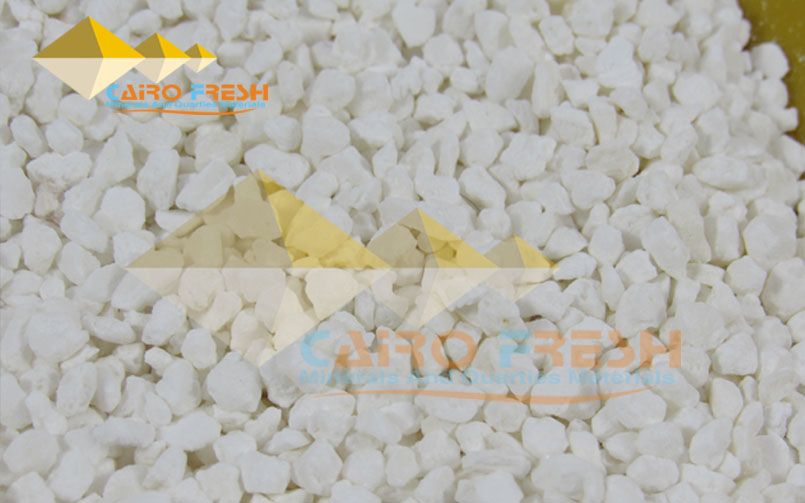Introduction
Seawater desalination is a critical technology for providing fresh water in regions facing water scarcity. However, the desalination process often faces challenges such as biofouling, which can reduce operational efficiency and increase maintenance costs. Calcite, a naturally occurring form of calcium carbonate (CaCO3), plays a crucial role in preventing biofouling in desalination plants. This blog explores how calcite helps prevent biofouling and its benefits for desalination operations.
The Problem of Biofouling
Biofouling is the accumulation of microorganisms, plants, algae, or small animals on surfaces in contact with water. In desalination plants, biofouling can occur on membranes, pipes, and other equipment, leading to several issues:
- Reduced Efficiency: Biofouling can clog membranes and reduce the flow rate, increasing energy consumption and operational costs.
- Increased Maintenance: Desalination plants require regular cleaning and maintenance to remove biofouling, leading to increased downtime and operational expenses.
- Equipment Damage: Biofouling can cause physical damage to equipment, reducing its lifespan and necessitating costly repairs or replacements.
The Role of Calcite in Preventing Biofouling
Calcite is introduced in the post-treatment stage of desalination to address the issue of biofouling. Here’s how calcite helps prevent biofouling:
- Balancing Mineral Content: Calcite dissolution releases calcium and bicarbonate ions into the water. These ions help maintain a balanced mineral content in the water, reducing the likelihood of conditions that promote biofouling.
CaCO3 (calcite)+H2O (water)+CO2 (carbon dioxide)→Ca2++2HCO3−\text{CaCO}_3 \ (\text{calcite}) + \text{H}_2\text{O} \ (\text{water}) + \text{CO}_2 \ (\text{carbon dioxide}) \rightarrow \text{Ca}^{2+} + 2\text{HCO}_3^{-}CaCO3 (calcite)+H2O (water)+CO2 (carbon dioxide)→Ca2++2HCO3−
- Stabilizing pH Levels: The bicarbonate ions produced during calcite dissolution act as buffers, stabilizing the pH levels of the water. Stable pH levels create less favorable conditions for the growth of biofouling organisms.
- Preventing Nutrient Supersaturation: By providing a controlled release of calcium ions, calcite helps prevent supersaturation of nutrients in the water. Supersaturation can lead to the growth of biofouling organisms, so preventing it helps reduce biofouling risks.
Benefits of Using Calcite for Biofouling Prevention
The use of calcite in preventing biofouling offers several benefits:
- Increased Efficiency: By preventing biofouling, calcite helps maintain the efficiency of membranes and other equipment, reducing energy consumption and operational costs.
- Reduced Maintenance: Calcite reduces the frequency and intensity of maintenance required to remove biofouling, lowering operational expenses and downtime.
- Extended Equipment Lifespan: By preventing biofouling and associated damage, calcite helps extend the lifespan of desalination equipment, reducing the need for costly repairs or replacements.
- Cost-Effective: Calcite is widely available and inexpensive compared to other biofouling prevention agents. Its natural abundance and efficiency make it a cost-effective option for large-scale desalination plants.
Applications Beyond Desalination
While the primary use of calcite in preventing biofouling is in desalination plants, it also has applications in other industries:
- Cooling Systems: Calcite can be used in industrial cooling systems to prevent biofouling on heat exchangers and other equipment, improving efficiency and reducing maintenance costs.
- Water Treatment: Calcite can be used in water treatment facilities to prevent biofouling in distribution systems, ensuring efficient and reliable water supply.
- Aquaculture: In fish farming, calcite can help prevent biofouling in tanks and water systems, ensuring a healthy environment for aquatic organisms.
Conclusion
Calcite plays a crucial role in preventing biofouling in desalination plants, ensuring efficient and reliable operation. Its ability to balance mineral content, stabilize pH levels, and prevent nutrient supersaturation makes it an invaluable component of the desalination process. As the demand for freshwater continues to rise, the importance of preventing biofouling in maintaining operational efficiency and reducing costs will become increasingly evident. By incorporating calcite into seawater treatment processes, desalination plants can ensure sustainable and reliable access to high-quality water while minimizing the challenges associated with biofouling.

